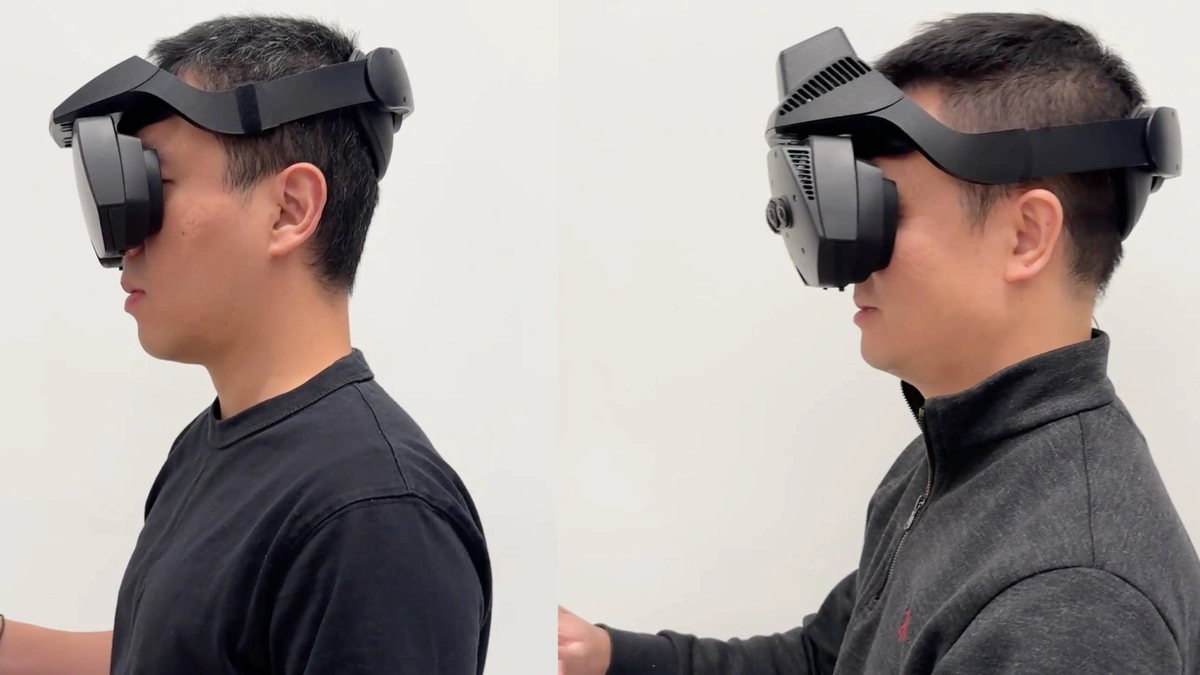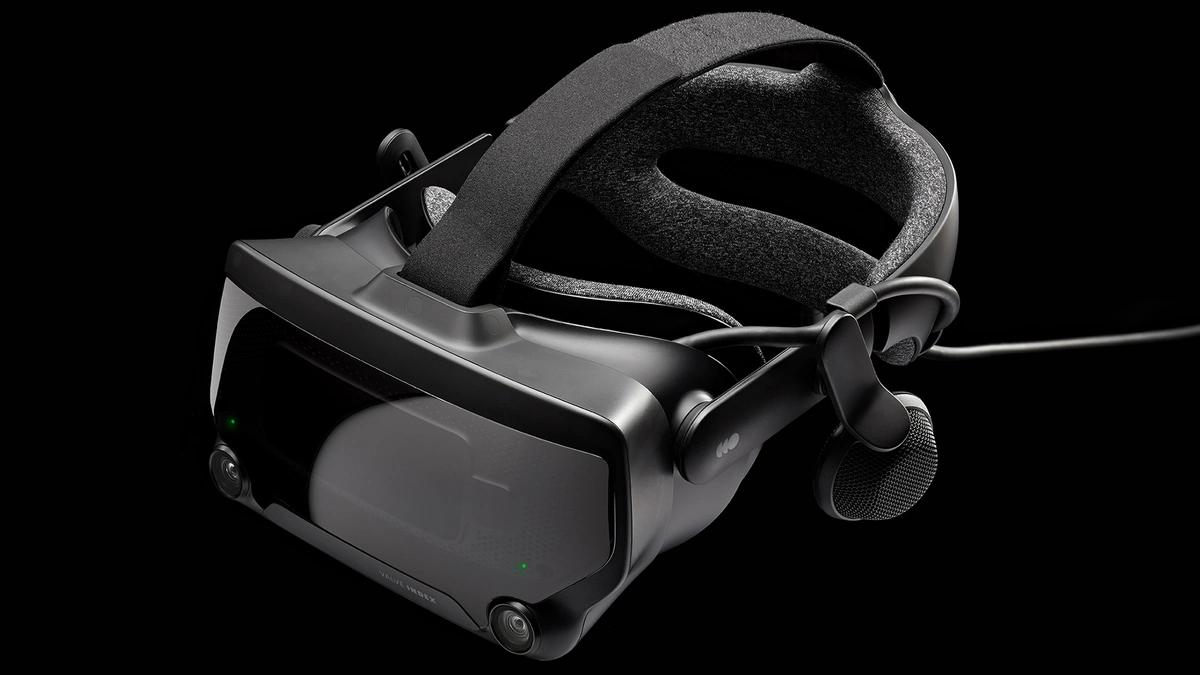Steam Frame VR Headset | Details on the Upcoming Device
Okay, tech enthusiasts, gamers, and VR dreamers, gather ’round! Let’s talk about the buzz surrounding the Steam Frame VR headset . Forget incremental updates; we’re potentially looking at a paradigm shift. This isn’t just another headset; it’s shaping up to be something truly special. I initially thought it would be a minor upgrade, but the more I dug in, the more I realized the implications are HUGE.
What Makes the Steam Frame VR Headset Different? (The Why)

Here’s the thing: the VR market is saturated. We’ve got Oculus (Meta), HTC, and a whole host of smaller players vying for our attention. But Valve – the company behind Steam – plays by its own rules. And those rules often rewrite the game. They don’t just want to compete; they want to innovate, and that’s what this headset promises. What fascinates me is Valve’s approach. They’re not just throwing specs at the wall; they’re thinking about the entire user experience, from software integration to hardware design. It’s about creating a seamless, immersive world.
The rumors suggest a focus on standalone capabilities. That means no tethering to a high-end PC. Think Oculus Quest, but with the Steam ecosystem baked right in. This is huge for accessibility. But it also opens the door to new types of VR experiences that aren’t limited by processing power bottlenecks. They are building a wireless vr experience that could be great for the users.
Valve is known for their software and gaming expertise and that should translate to a great user experience. This can give them a huge advantage compared to the other players on the market.
Rumored Specs and Features
Okay, let’s dive into the nitty-gritty. While Valve is notoriously tight-lipped, leaks and whispers have painted a tantalizing picture of what the Steam Frame VR headset might offer:
- High-resolution displays: Think crystal-clear visuals that minimize screen-door effect.
- Wide field of view: For truly immersive experiences.
- Inside-out tracking: No external sensors needed. Just put on the headset and go.
- Advanced haptics: Feel the virtual world in your hands.
- Integrated SteamVR: Seamless access to your entire Steam library.
These are just rumors, of course. But if even half of them are true, we’re looking at a serious contender in the VR space. Don’t you think?
The Steam Advantage (Software and Ecosystem)
Hardware is important, no doubt. But Valve’s real strength lies in its software and ecosystem. Steam is the dominant platform for PC gaming, and bringing that ecosystem to VR is a massive advantage. Imagine having access to thousands of VR games and experiences right out of the box. This is the potential power of the Steam Frame VR headset.
And it’s not just about the games. Steam also offers a vibrant community, social features, and a wealth of user-generated content. This creates a dynamic and engaging VR environment that goes beyond simple gaming.
But, and here’s the big but, Valve needs to get the price right. If they price the Steam Frame VR headset too high, they’ll alienate a large segment of the market. They need to strike a balance between premium features and affordability. This is very important for mass adoption.
The Competition and the Future of VR
Let’s be honest: the VR market is still relatively niche. While interest is growing, widespread adoption remains a challenge. The Steam Frame VR headset has the potential to change that, but it faces stiff competition from established players like Meta (Oculus) and HTC.
Meta, in particular, has a significant head start in the standalone VR space with its Quest line of headsets. They’ve invested heavily in content and marketing, and they have a large and loyal user base. The key to Valve’s success will be to differentiate itself from the competition by offering a superior user experience, a compelling ecosystem, and a competitive price point. They need to focus on creating a VR experience that is both accessible and engaging, and that appeals to a broad audience.
According to Wikipedia , many companies are focusing on virtual reality and its future.
Why This Matters for India
India is a mobile-first market, and the idea of a standalone VR headset is particularly appealing. No need for expensive PCs or complicated setups. Imagine students using VR for immersive learning experiences, architects visualizing designs in 3D, or doctors practicing complex surgeries in a simulated environment. The potential applications are endless.
Furthermore, the Steam ecosystem could bring a wealth of new content and opportunities to Indian developers. This could spark a new wave of innovation in the Indian gaming and entertainment industries.
The Steam Frame VR headset could be a game-changer, not just for the VR market, but also for the Indian tech landscape. It all depends on execution and pricing. But, with Valve at the helm, I’m cautiously optimistic. Very optimistic. So stay tuned.
FAQ About Steam Frame VR Headset
When is the expected release date of the Steam Frame VR headset?
Currently, there’s no official release date. However, based on industry speculation, many are expecting it may be within the next year.
What will be the price of the Steam Frame VR headset?
Pricing remains a mystery. It’s critical for the mass adoption of VR to price it competitively.
Will the Steam Frame VR headset be compatible with existing SteamVR games?
Most likely, yes. That’s a core value proposition for Valve.
Will the headset require a powerful PC to operate?
It is speculated that it will be a stand-alone device, not requiring a PC.
What kind of resolution and refresh rate can we expect?
Rumors suggest a high-resolution display and high refresh rate for an immersive experience.
Can I play non-VR games on the Steam Frame VR headset ?
Potentially, yes, via virtual desktop applications.













